Pandemic Architecture, an International Ideas Competition curated by the Design Ambassador for ARCHISEARCH.gr, invited the creative community to open up a dialogue and create a think tank, looking for ideas from the architectural and design community about the future of the living, the workspace, the public space and the tourism industry after the outbreak of Covid-19.
C-Bloc: Maintaining Business and Life Continuity by Designing the City-block as a Community-block
A conceptual experiment that distills years of research on vibrant and thriving urban environments with more recent science around the pandemic.
Objective
To create a prototype neighborhood that can empower the community, create a safer physical and psychological environment, and enable business and life continuity during a pandemic.
Approach
Responses to the pandemic can be placed on two ends of a spectrum. In the individual-focused approaches, citizens are responsible for taking measures within their personal control to contain the virus. In the state-focused approach the state implements lockdowns, stay-home orders and strict social distancing measures to flatten the curve and contain spread.
Both approaches have failings, ranging from minimal control measures and individual adherence to guidelines to major disruptions in economic, social, and psychological aspects of the urban fabric. What is missing is a community-focused approach that allows a rapid collective response without diminishing individual agency.
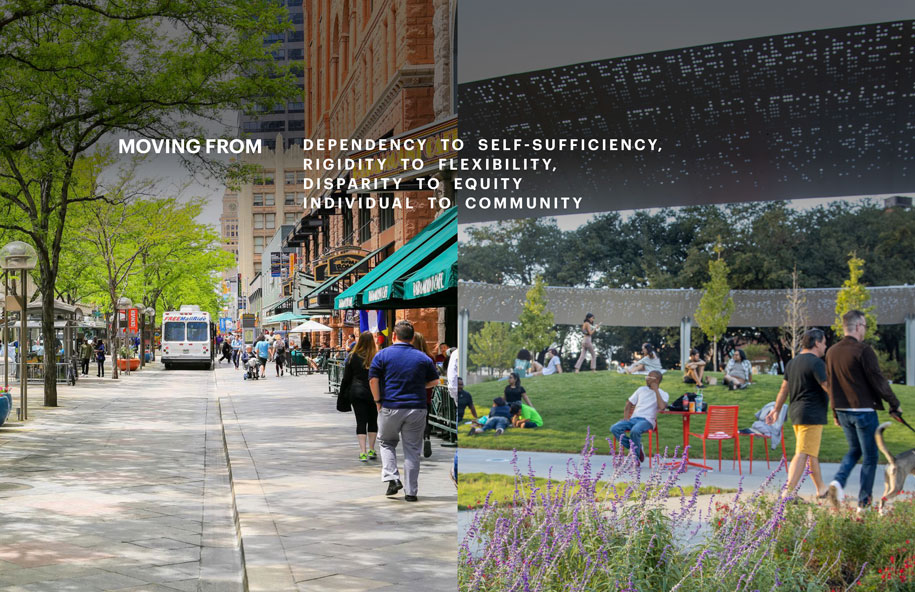
Our approach embraces the shift in the paradigm from “I am responsible for MY health” to “I am responsible for YOUR health- and you are responsible for mine”- not just ideologically but as sound business practice. We lean on evidence from new urbanism as well as infection prevention. We posit that Life continuity- IS business continuity- and a resilient solution works for human, environmental and fiscal health.
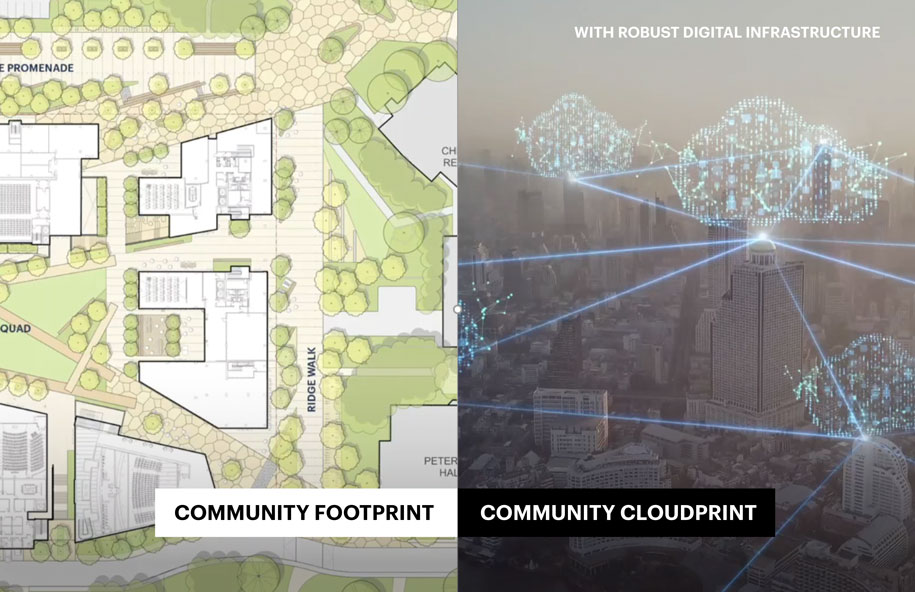
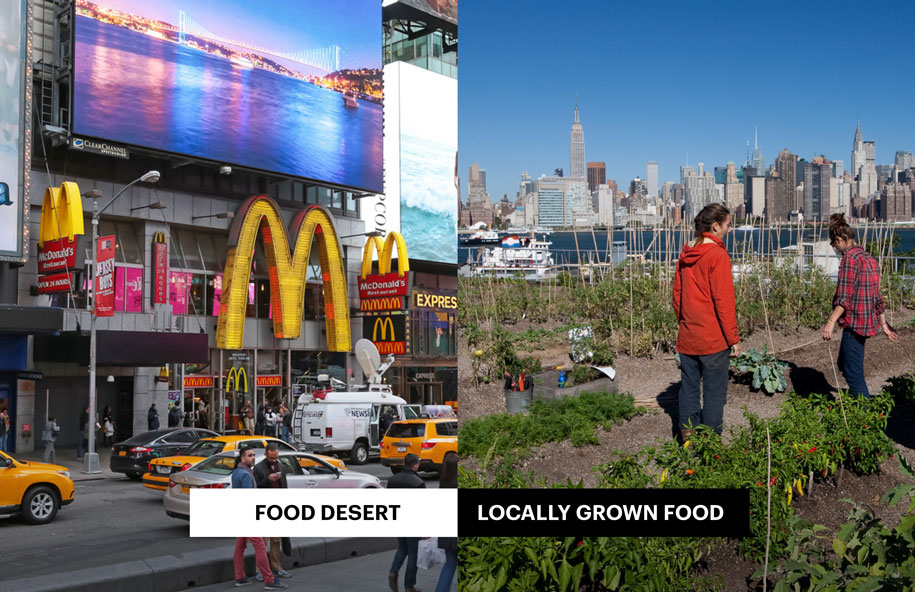
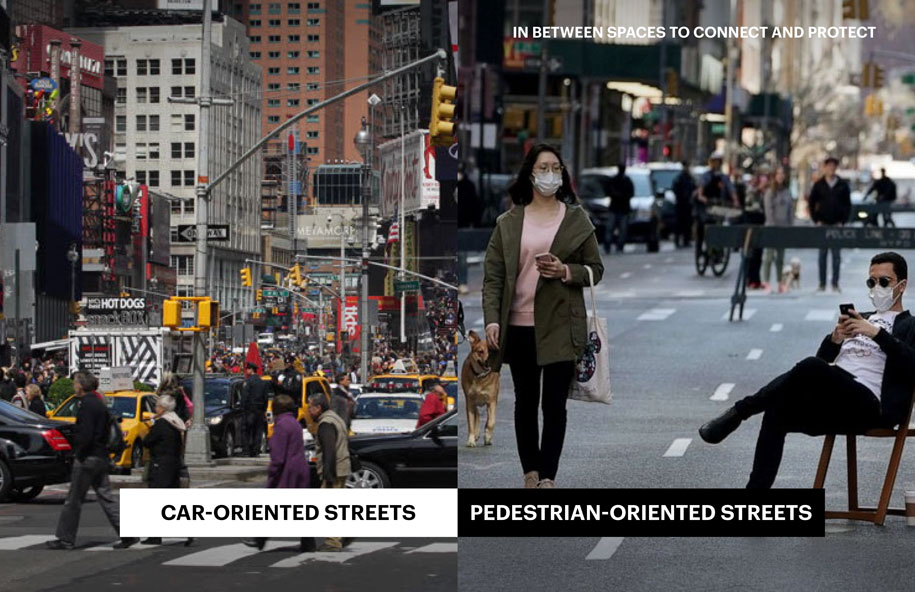
Concept
C-Bloc is a prototype where the city-block becomes a community-block. It is sustainable, innovative, accessible, and vibrant while being resilient to future pandemics. It survives the next infectious disease outbreak without going through a lockdown that puts the livelihood of people in turmoil by being built on a foundation of health & wellness.
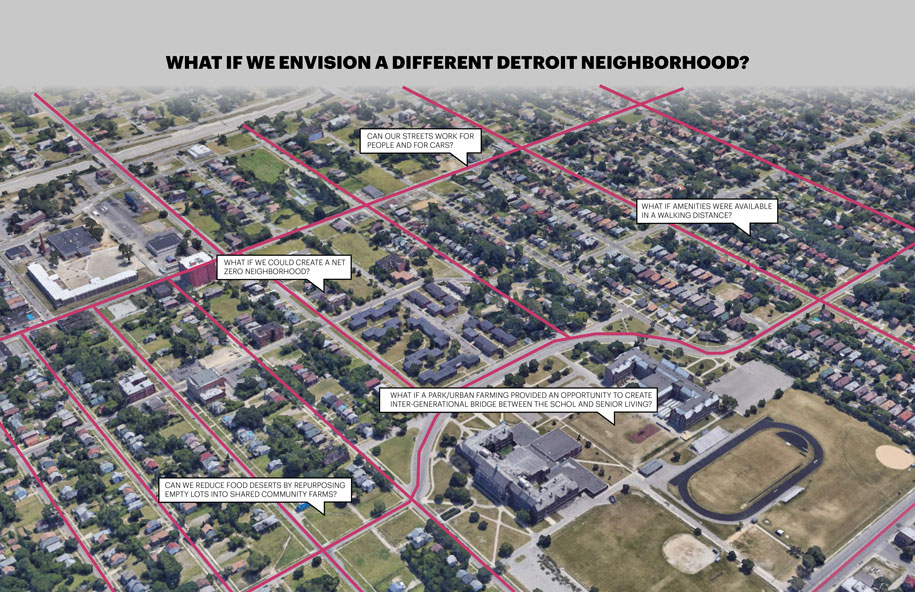
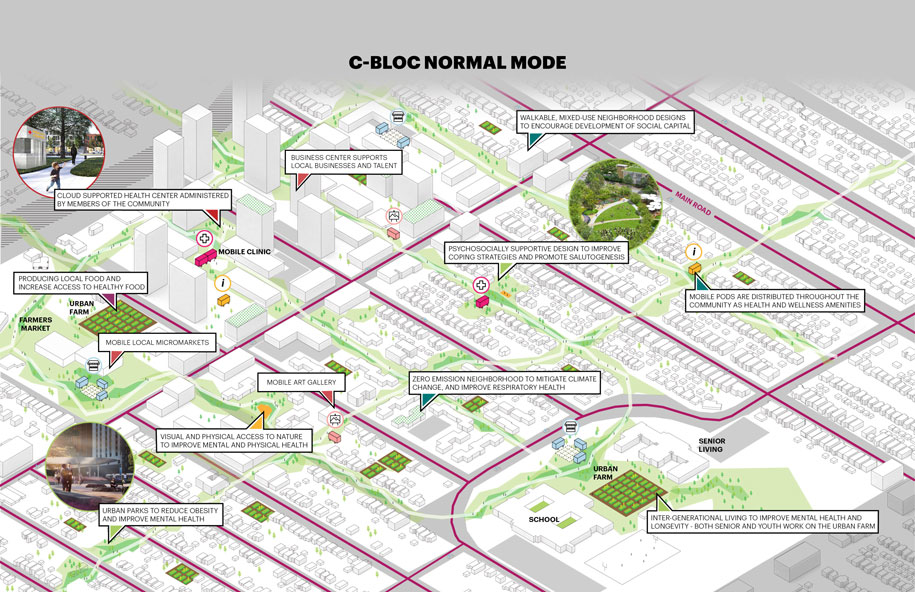
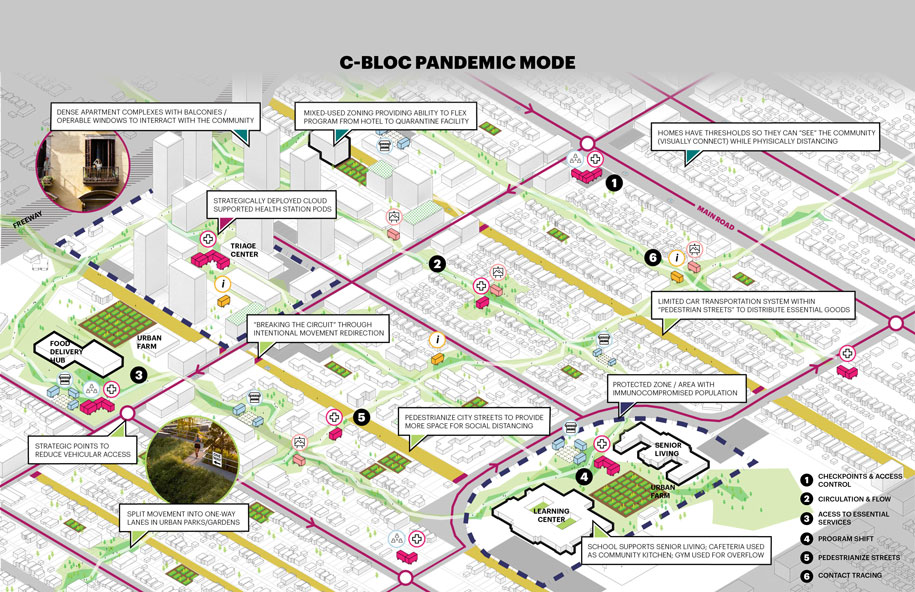
C-Bloc is a self-sustaining community that is net positive for environmental and social health. This allows it to get access to essential services, as well as social health, without increasing risk of external exposure. It has an integrated digital infrastructure where every footprint has a corresponding cloud-print.
This allows business, health and learning to continue when in person interactions are limited. There are defined circuits and circuit-breakers, allowing the community to rapidly contain certain sections while continuing business & life in others.
A mixed-use, inter-generational and inclusive approach provides social resilience.
The strongest in the community can protect the most vulnerable. The youngest and the oldest in the community lean on each other. A flexible and mobile infrastructure allows rapid adaptation and (when needed) proportional de-compression. Health & Education form the cornerstones that support business and life. This means that health is a foundation of learning systems, community health objectives are worked on in tandem by local health and education systems, and during a pandemic learning facilities flex to health & community.
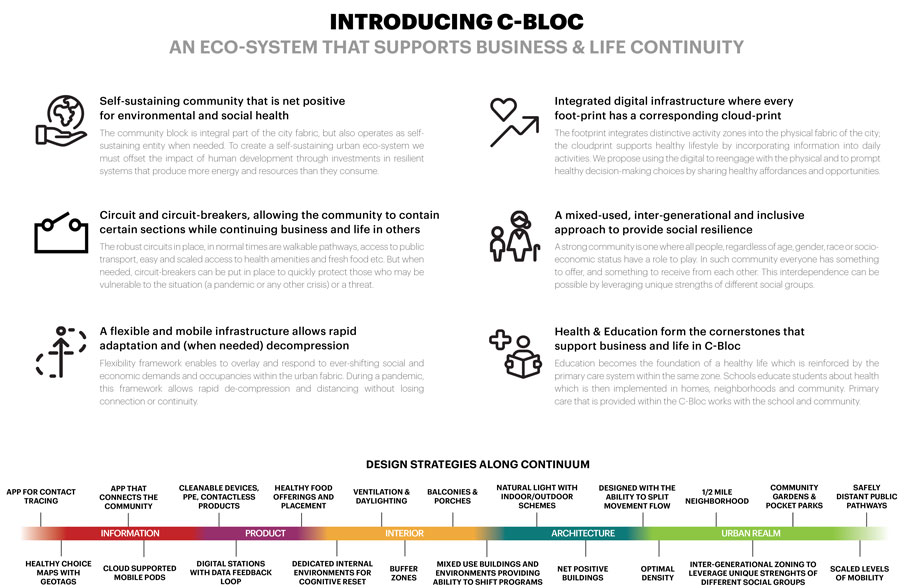
The six principles above are supported by twelve design strategies that support the normal business and life operation. When switching to pandemic mode it leverages six activation strategies that allow it to rapidly contain and mitigate the virus, while maintaining business and life continuity.
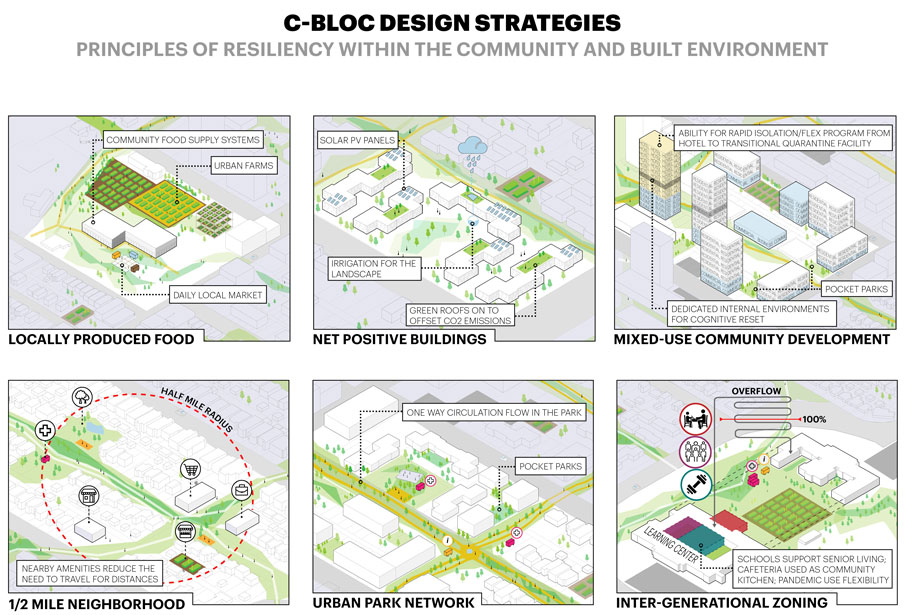
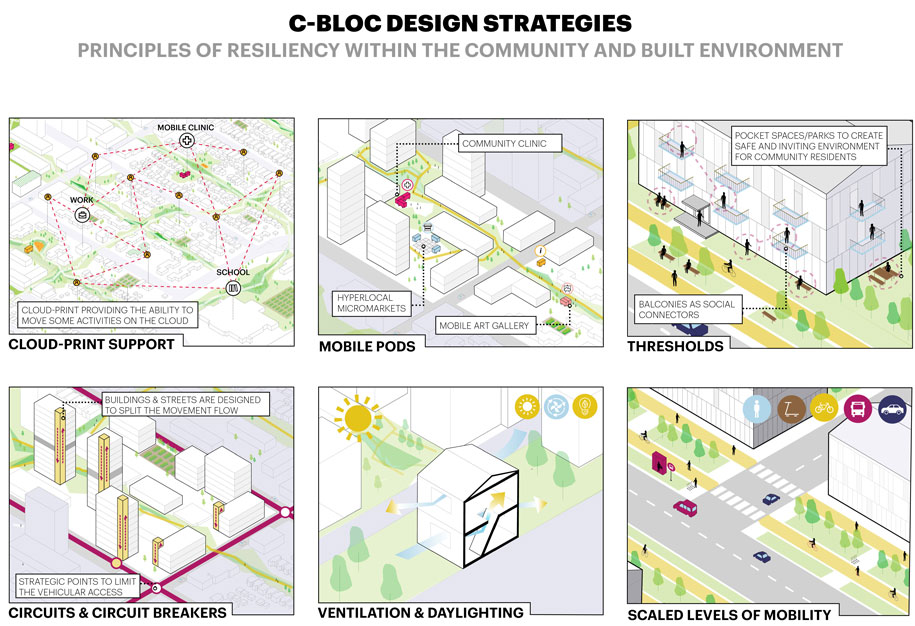
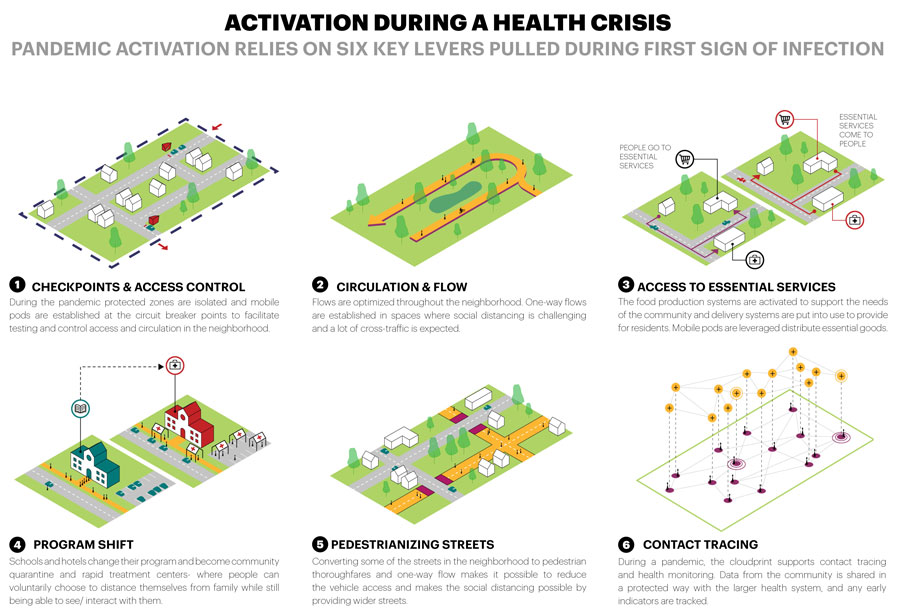
Facts & Credits
Participants: HKS Architects
Team: Upali Nanda
Craig Kolstad
Nikola Gjurchinoski
Courtney Kraus
Babak Soleimani
The project was longlisted in top 100 out of 440 projects.
The impact of Pandemic Architecture competition on the international architectural community was astonishing, with the number of registrations to exceed 800, with the final proposals to exceed 400 and with participants from more than 60 different countries.
Results will be officially announced on the 20th of September.
_________________________________________
Check out the open call and the jury here!
READ ALSO: Manifestations of a Pandemic Afterlife | Pandemic Architecture Top100